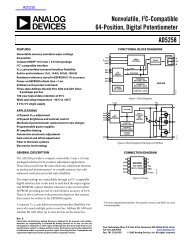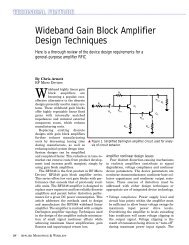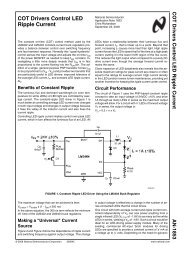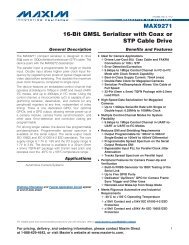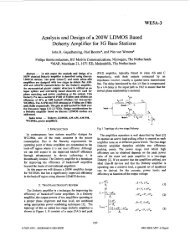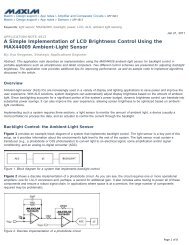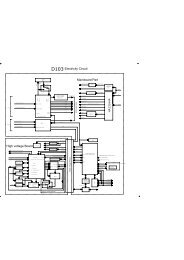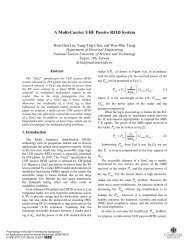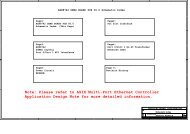3-Phase BLDC Motor Sensorless Control Using MC56F8013
3-Phase BLDC Motor Sensorless Control Using MC56F8013
3-Phase BLDC Motor Sensorless Control Using MC56F8013
- No tags were found...
Create successful ePaper yourself
Turn your PDF publications into a flip-book with our unique Google optimized e-Paper software.
<strong>Control</strong> TheoryChannel 1 in Figure 2-11 shows the disturbed branch voltage, while the other phase (channel 2) is notaffected because it faces balanced mutual capacitance. The imbalance was purposely made by addinga small capacitor on the motor terminals, to demonstrate the effect more clearly. After the imbalance isremoved the branch voltage is clean, with no spikes.Figure 2-11. Balanced Capacity CouplingNOTEThe configuration of the phase winding end turns has a significant impact;it must be managed properly to preserve the balance in the mutualcapacity. This is important, especially for prototype motors, which areusually hand-wound.NOTEFailure to maintain balance of the mutual capacitance can easily disqualifysuch a motor from using sensorless techniques based on the back-EMFsensing. Usually, <strong>BLDC</strong> motors with windings wound on separate polesshow minor presence of the mutual capacitance. Thus, the disturbance isalso insignificant.3-<strong>Phase</strong> <strong>BLDC</strong> <strong>Motor</strong> <strong>Sensorless</strong> <strong>Control</strong> using <strong>MC56F8013</strong>, Rev. 024 Freescale Semiconductor


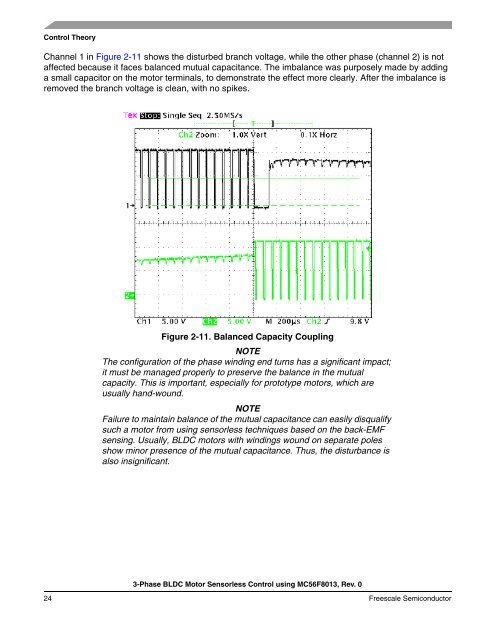
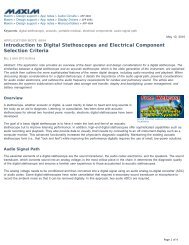
![P-CAD EDA - [Sheet1]](https://img.yumpu.com/49470492/1/190x115/p-cad-eda-sheet1.jpg?quality=85)
